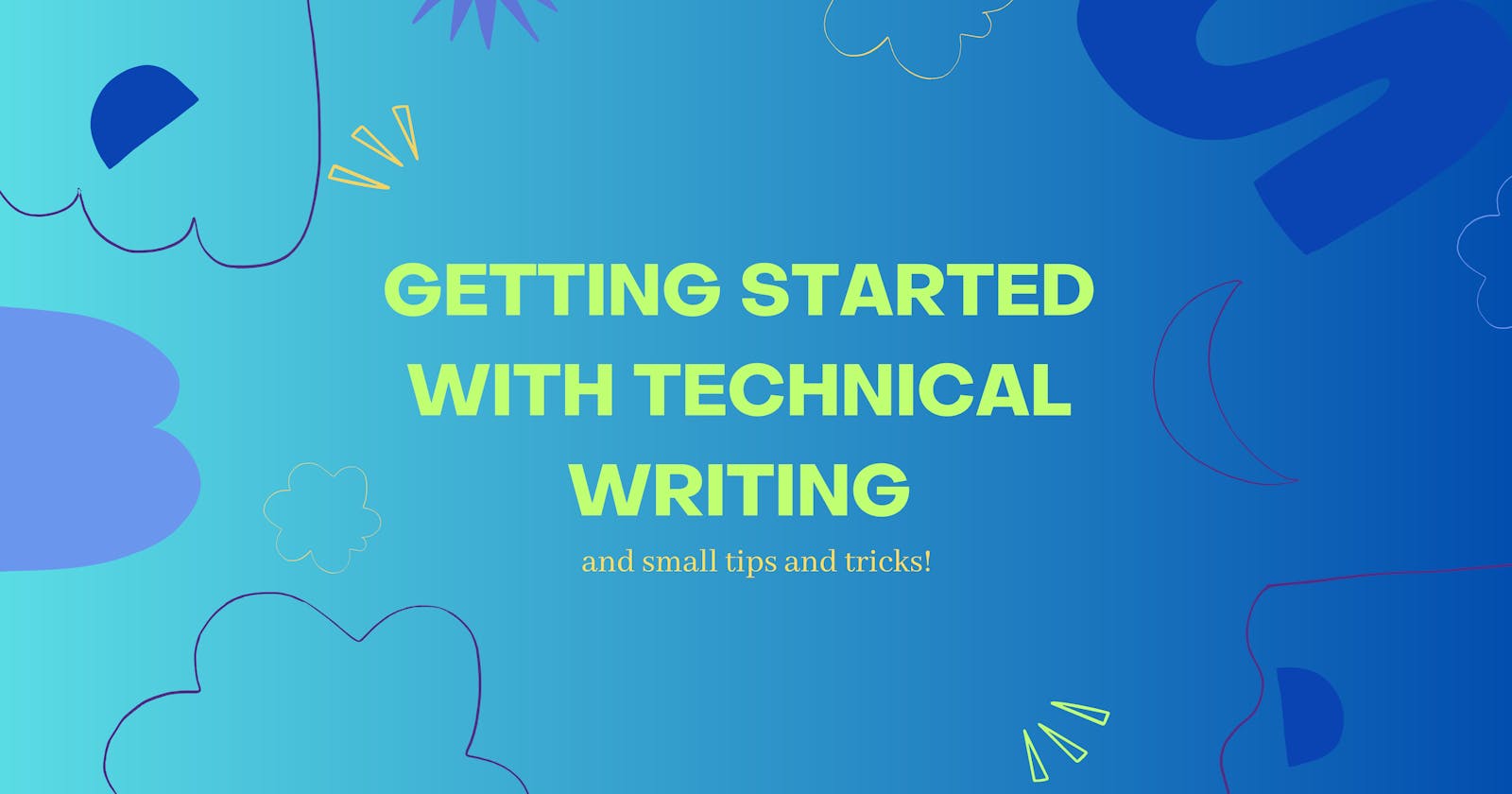Writing is an exceptional skill - with an idea and how to build it, a developer needs to reach an audience with words and its magic!
Words can easily be transformed into wonder - it bridges the gap between complex codes and human understanding. Imagine being the translator, converting intricate software, hardware, and systems into words that dance on the page and make the seemingly incomprehensible, well, comprehensible!
Consider this: You've just crafted an instruction manual that transforms a tangle of wires and circuits into a "connect-the-dots" adventure, guiding even a tech novice through the process. Or perhaps you've conjured an enchanting API documentation that empowers developers to wield the magic of code with grace and ease. Technical writing and documentation help us get through the ways!
How to get started!
1. Embrace the Learning Curve: Just like learning any new skill, technical writing requires a bit of patience. Don't be disheartened if certain terms or concepts initially baffle you. Consider each hurdle an opportunity to expand your knowledge. Gradually, you'll find that the language of software starts making sense.
2. Forge Your Linguistic Sword: The language barrier can be a big hurdle to many while getting started. Arm yourself with a trusty dictionary – digital or otherwise – and stride confidently into the world of jargon. Each word you conquer is a step closer to fluency! And most of all - read, read, read!
3. Hands-On Exploration: To truly grasp software intricacies, get hands-on experience. Experiment with tools, follow tutorials and try out different functions. As you gain practical knowledge, you'll not only understand the technology better, but you'll also be able to explain it more confidently to others.
5. Engage with the Community: You're not alone on this journey! Engage with online forums, communities, and social media groups related to technical writing or the software you're exploring. Asking questions, sharing experiences, and learning from others can be immensely helpful.
Example: Navigating User Profiles
Consider writing a guide for setting up a user profile in a software application. Instead of diving into technical terms, approach it from a user's perspective:
"Welcome to the world of personalized profiles! Think of your user profile as your digital home within our app. Just like you'd arrange furniture and décor to your liking, your profile lets you customize your app experience. Here's how you can do it:
Sign In: Open the app and log in using your credentials.
Find Your Profile: Look for your name or avatar in the top right corner.
Edit Your Details: Click on 'Edit Profile' to update your photo, bio, and other details.
Privacy Settings: Adjust who can see your information and posts.
Save Changes: Don't forget to save your updates before leaving!"*
Remember, every journey starts with a single step.
Understanding your audience
The more you learn, the more you know. If you are well experienced in your technological field, your base audience would be different than that of a beginner.
Understanding your audience in technical writing is akin to having a guiding star on your navigation chart. Just as a ship captain assesses weather conditions before setting sail, a technical writer must analyze their readers' needs before crafting content. Think of it as tailoring your communication style to match your audience's expertise level and expectations. This not only ensures your message hits the mark but also avoids overwhelming or underserving your readers.
In technical writing, trust is the currency. Just as a dependable compass guides a ship through stormy waters, understanding your audience builds trust that you're there to guide them accurately and effectively.
By knowing your audience, you're essentially equipping yourself with a compass, making sure your content reaches the right destination – the heart and mind of the reader.
Demystifying Documentation
Imagine you're composing a treasure map for developers, leading them to the grand troves of software functionality. Welcome to the captivating realm of API documentation, where your words hold the power to make code dance and applications thrive! 🎩💻
Plain 'Techy' Talk: Use the language developers are familiar with – no need for fancy jargon. It's like talking to a friend who knows their stuff. They'll appreciate it when you're speaking their language.
Code Snippets: Think of these like LEGO instructions. Show developers bits of code that they can use right away. It's like handing them ready-made building blocks for their project.
Play and Learn: Imagine a playground where developers experiment with ideas. Provide a safe place – like a sandbox – where they can try out the API without any pressure.
Casual Tips and Tricks for the Newbies!
Think of it as your trusty survival kit for navigating the tech writing jungle with style and ease. Let's dive in and uncover those golden nuggets of wisdom that'll have you crafting crystal-clear content like a pro in no time! 🚀📝
Talk Like a Human: Imagine you're explaining things to a friend who's not familiar with the tech stuff. Use everyday language, and avoid turning your content into a dictionary.
Step-by-Step Wins: Break complex tasks into simple steps. It's like following a recipe – each step leads to a delicious result.
Scannable Content: Make your content easy to skim. Use headings, bullet points, and short paragraphs. Readers love bite-sized info.
Screenshots Speak Louder: Include screenshots to show exactly what you're talking about. It's like guiding with pictures instead of just words.
Consistency is Cool: Keep your style and formatting consistent. It's like wearing the same superhero costume throughout the story.
Test Your Instructions: Pretend you're a newbie yourself. Follow your instructions – if they lead you astray, it's time for edits.
Befriend Version Control: If you're updating content, track changes so readers know what's new. It's like giving them a tour of the latest attractions.
Stay Curious: Technology evolves, and so does your knowledge. Keep learning, exploring, and adapting – like an adventurer in the tech jungle.
Remember, technical writing is like guiding someone through a new city. Make their journey smooth, enjoyable, and full of 'aha!' moments. Happy writing! 📝🌆

